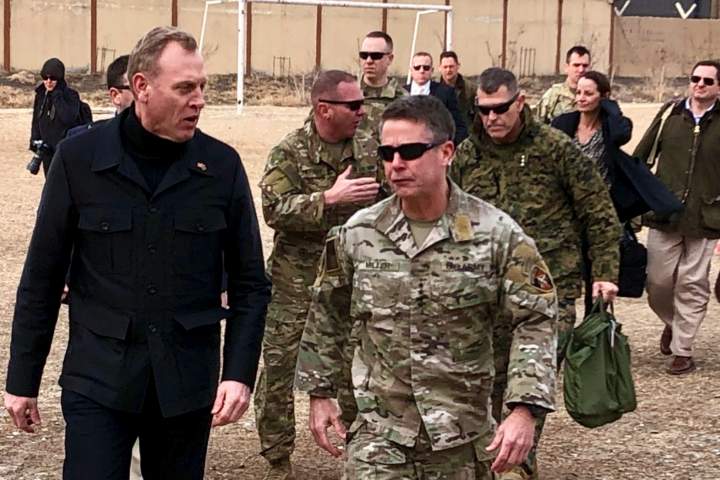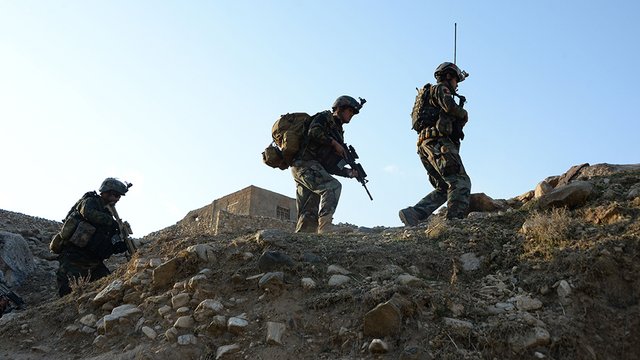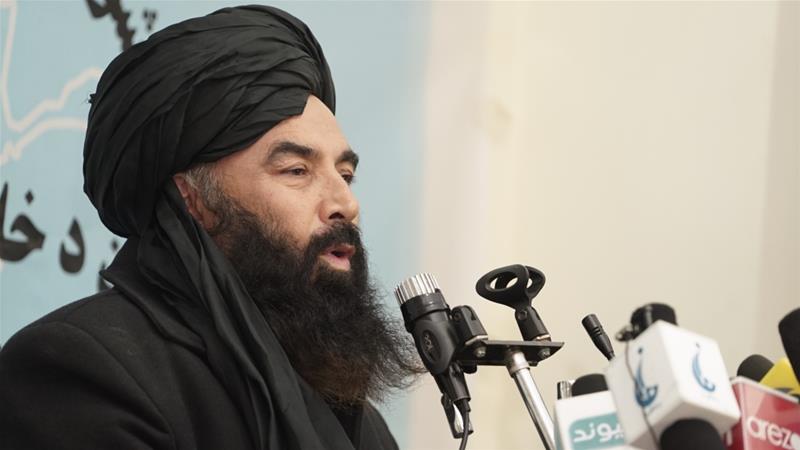As the Trump administration attempts to secure a peace deal with the Taliban to finally end the war, the bloodshed of Afghans is only rising.
Publish dateWednesday 1 May 2019 - 22:49
Story Code : 184345
AVA- According to the latest assessment released by the Special Inspector General for Afghanistan Reconstruction (SIGAR) the number of Afghan National Defense and Security Forces (ANDSF) casualties received between December 1 last year and February of this year, “were approximately 31 percent higher than the same period one year prior.”
The Pentagon watchdog group also pointed out that “enemy-initiated attacks rose considerably: the monthly average attacks from November 2018 through January 2019 increased by 19 percent compared to the monthly average over the previous reporting period” which was August through to the end of October.
Almost 11,000 civilian casualties were registered by the United Nations Assistance Mission in Afghanistan (UNAMA) in 2018, an uptick of five percent from the previous year. Of those, almost 4,000 were deaths – an increase of 11 percent on 2017.
Deliberately targeted civilian casualties from attacks launched by the country’s ISIS affiliate, known as ISIS-Khorasan, also “more than doubled from 843 in 2017 to 1871 in 2018,” and came mostly in the form of suicide attacks against the minority Shi’a Muslim population.
The quarterly report also brought to light the ongoing issue of Afghan soldiers training in the U.S. but disappearing into the American population. AC-208 pilot training classes were suspended in the U.S. given that more than 40 percent of the students were documented to have gone absent without leave (AWOL).
While the remaining trainees “have been pulled back to complete their training in Afghanistan,” it is unclear if those who did make unauthorized departures are still at-large in the U.S.
In late 2017, Fox News reported that between 2005 and 2017 – 253,977 foreign trainees came to the United States for training. According to SIGAR’s analysis then, 2,537 were from Afghanistan, and during that time, 320 foreign trainees went AWOL. Of the 320, 152 – 47.5 percent – were from Afghanistan and more than half remained unaccounted for.
That overall figure represented about 6 percent of all Afghans who received U.S-based training, while only 0.07 percent of trainees from other countries went AWOL.
The protracted and stalemate Afghanistan conflict – approaching its 18th year – still receives some $4.9 billion annually from the Pentagon budget just to provide Afghan troops with supplies, salaries, and food, according to the Associated Press. The “reconstruction” effort since 2001 alone has cost some $132 billion.
But the quest to bring it to a close is continuing.
“We are working to achieve reconciliation so that this conflict, now coming on two decades, can be resolved. We can take down the violence level, we can get a political outcome,” Secretary of State Mike Pompeo said this week.
Ongoing negotiations between U.S. officials and Taliban top brass in Doha, Qatar have to-date been based around the condition that Taliban operatives are not allowed to safeguard terrorist groups that pose a threat to the U.S. homeland. The Taliban has remained adamant that it will not negotiate directly with the Afghan government.
The Pentagon watchdog group also pointed out that “enemy-initiated attacks rose considerably: the monthly average attacks from November 2018 through January 2019 increased by 19 percent compared to the monthly average over the previous reporting period” which was August through to the end of October.
Almost 11,000 civilian casualties were registered by the United Nations Assistance Mission in Afghanistan (UNAMA) in 2018, an uptick of five percent from the previous year. Of those, almost 4,000 were deaths – an increase of 11 percent on 2017.
Deliberately targeted civilian casualties from attacks launched by the country’s ISIS affiliate, known as ISIS-Khorasan, also “more than doubled from 843 in 2017 to 1871 in 2018,” and came mostly in the form of suicide attacks against the minority Shi’a Muslim population.
The quarterly report also brought to light the ongoing issue of Afghan soldiers training in the U.S. but disappearing into the American population. AC-208 pilot training classes were suspended in the U.S. given that more than 40 percent of the students were documented to have gone absent without leave (AWOL).
While the remaining trainees “have been pulled back to complete their training in Afghanistan,” it is unclear if those who did make unauthorized departures are still at-large in the U.S.
In late 2017, Fox News reported that between 2005 and 2017 – 253,977 foreign trainees came to the United States for training. According to SIGAR’s analysis then, 2,537 were from Afghanistan, and during that time, 320 foreign trainees went AWOL. Of the 320, 152 – 47.5 percent – were from Afghanistan and more than half remained unaccounted for.
That overall figure represented about 6 percent of all Afghans who received U.S-based training, while only 0.07 percent of trainees from other countries went AWOL.
The protracted and stalemate Afghanistan conflict – approaching its 18th year – still receives some $4.9 billion annually from the Pentagon budget just to provide Afghan troops with supplies, salaries, and food, according to the Associated Press. The “reconstruction” effort since 2001 alone has cost some $132 billion.
But the quest to bring it to a close is continuing.
“We are working to achieve reconciliation so that this conflict, now coming on two decades, can be resolved. We can take down the violence level, we can get a political outcome,” Secretary of State Mike Pompeo said this week.
Ongoing negotiations between U.S. officials and Taliban top brass in Doha, Qatar have to-date been based around the condition that Taliban operatives are not allowed to safeguard terrorist groups that pose a threat to the U.S. homeland. The Taliban has remained adamant that it will not negotiate directly with the Afghan government.
avapress.net/vdceee8znjh8vxi.1kbj.html
Tags
Top hits












